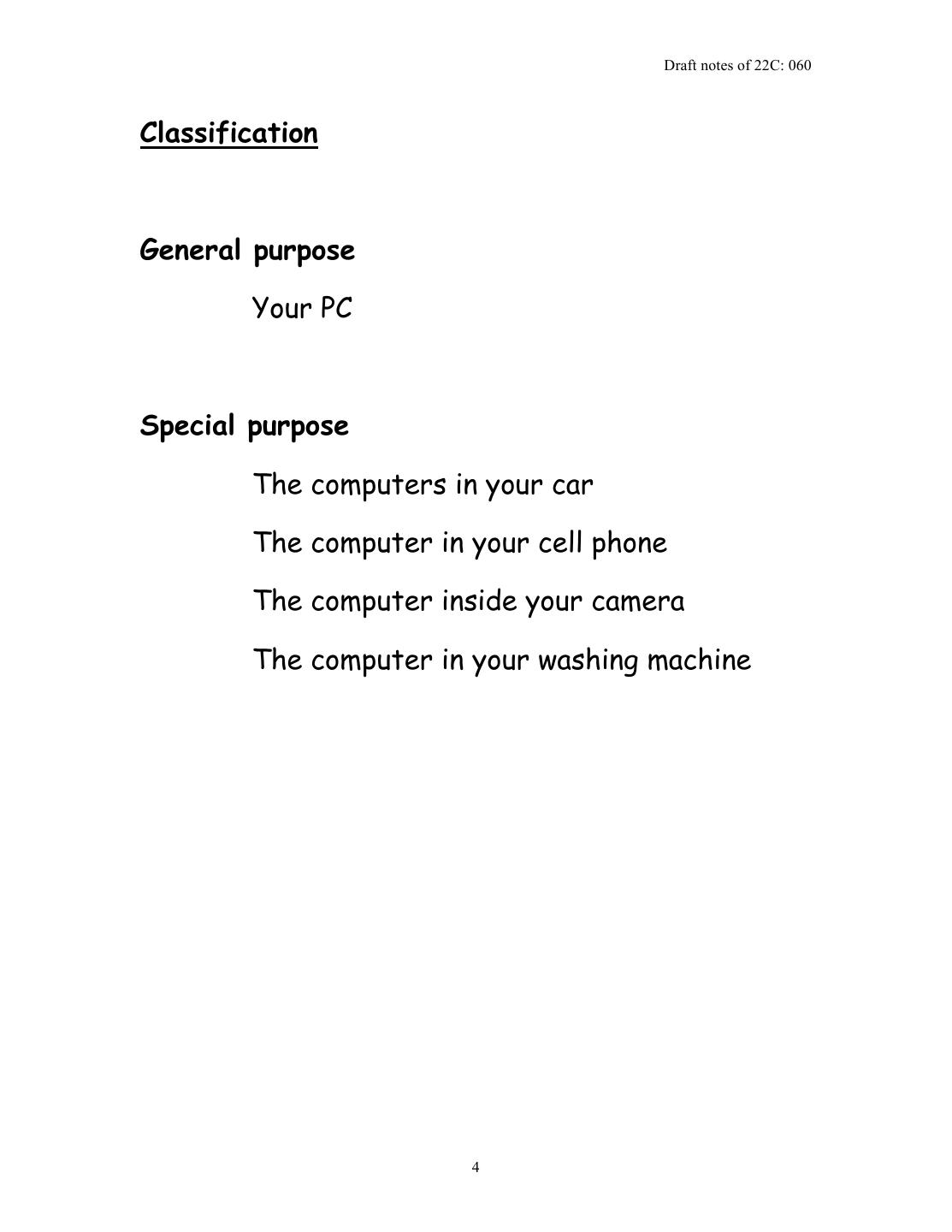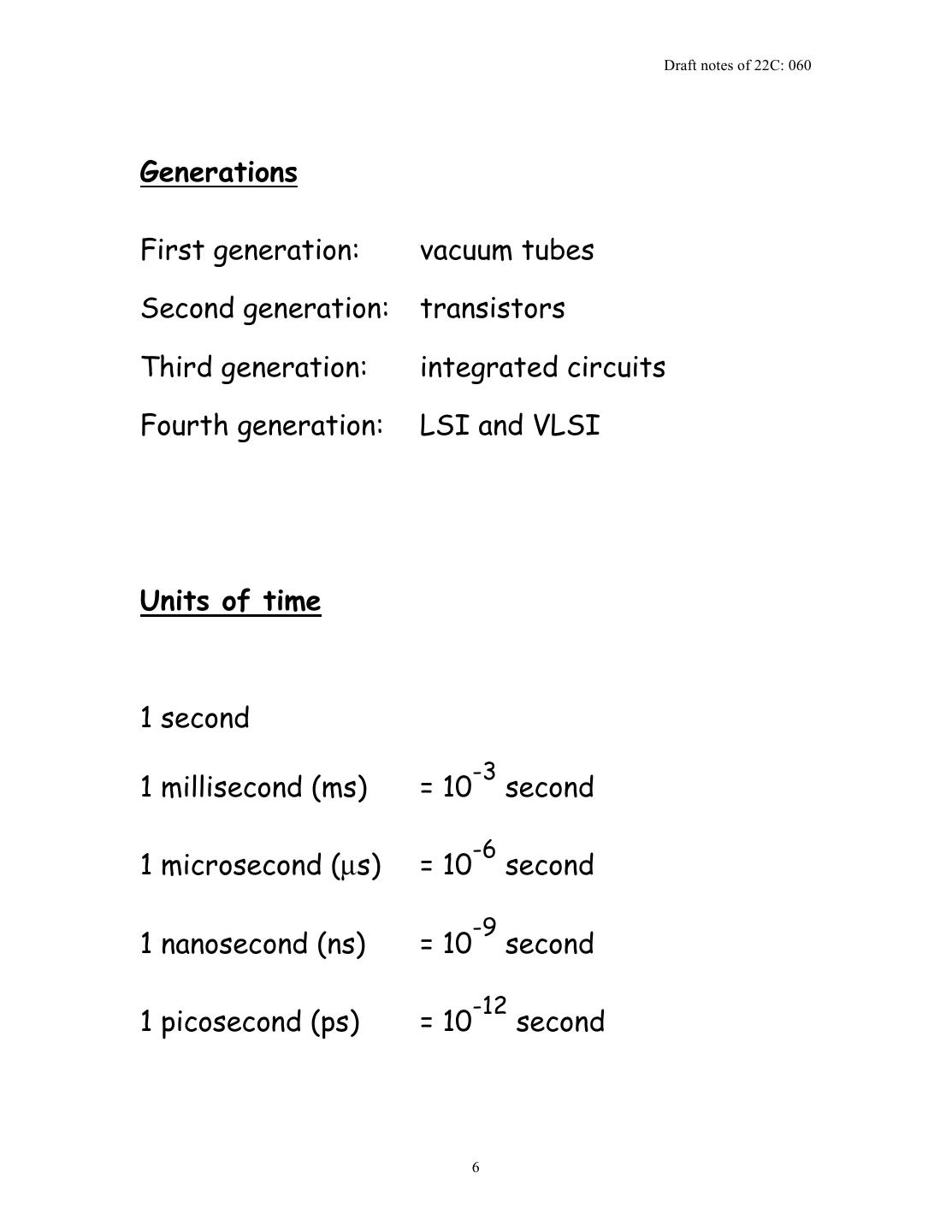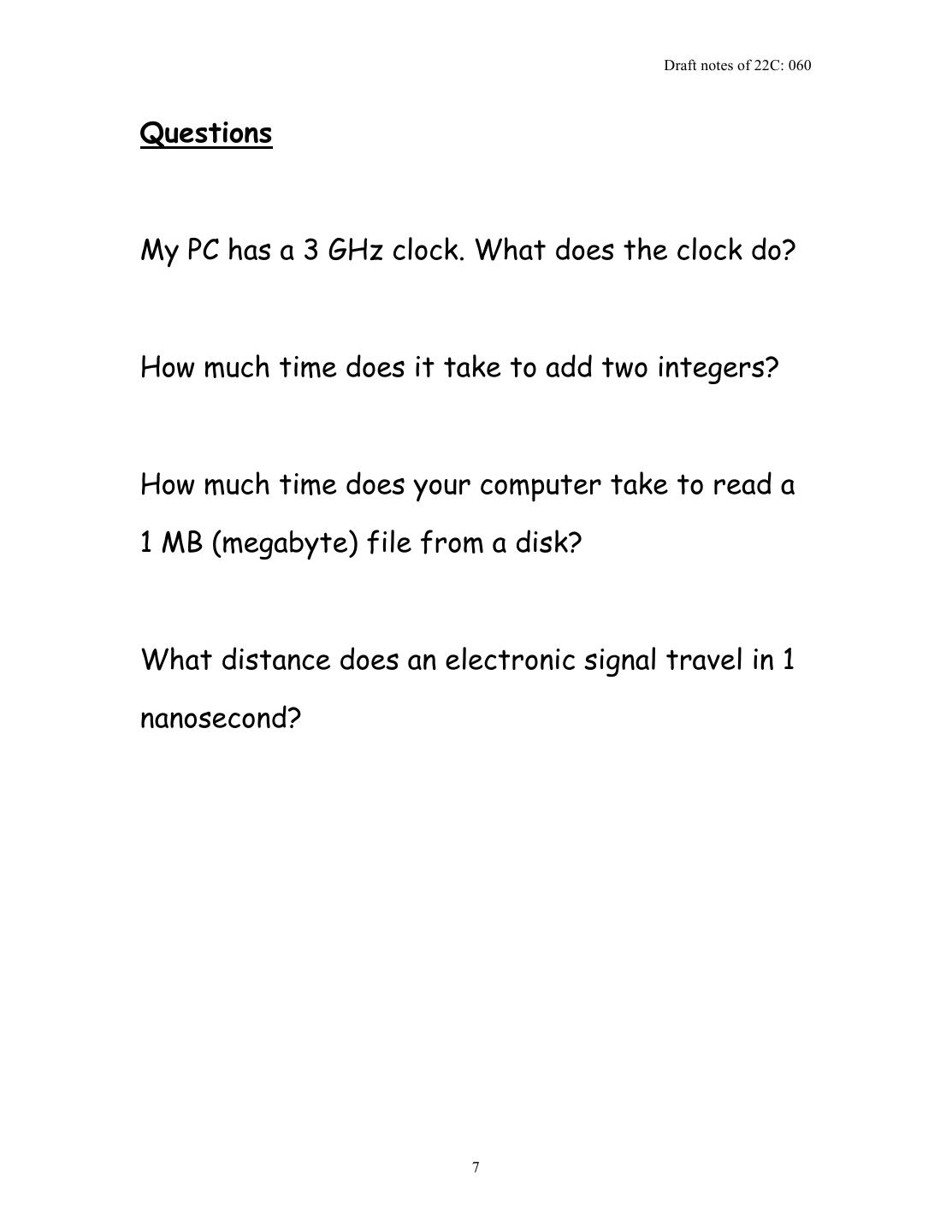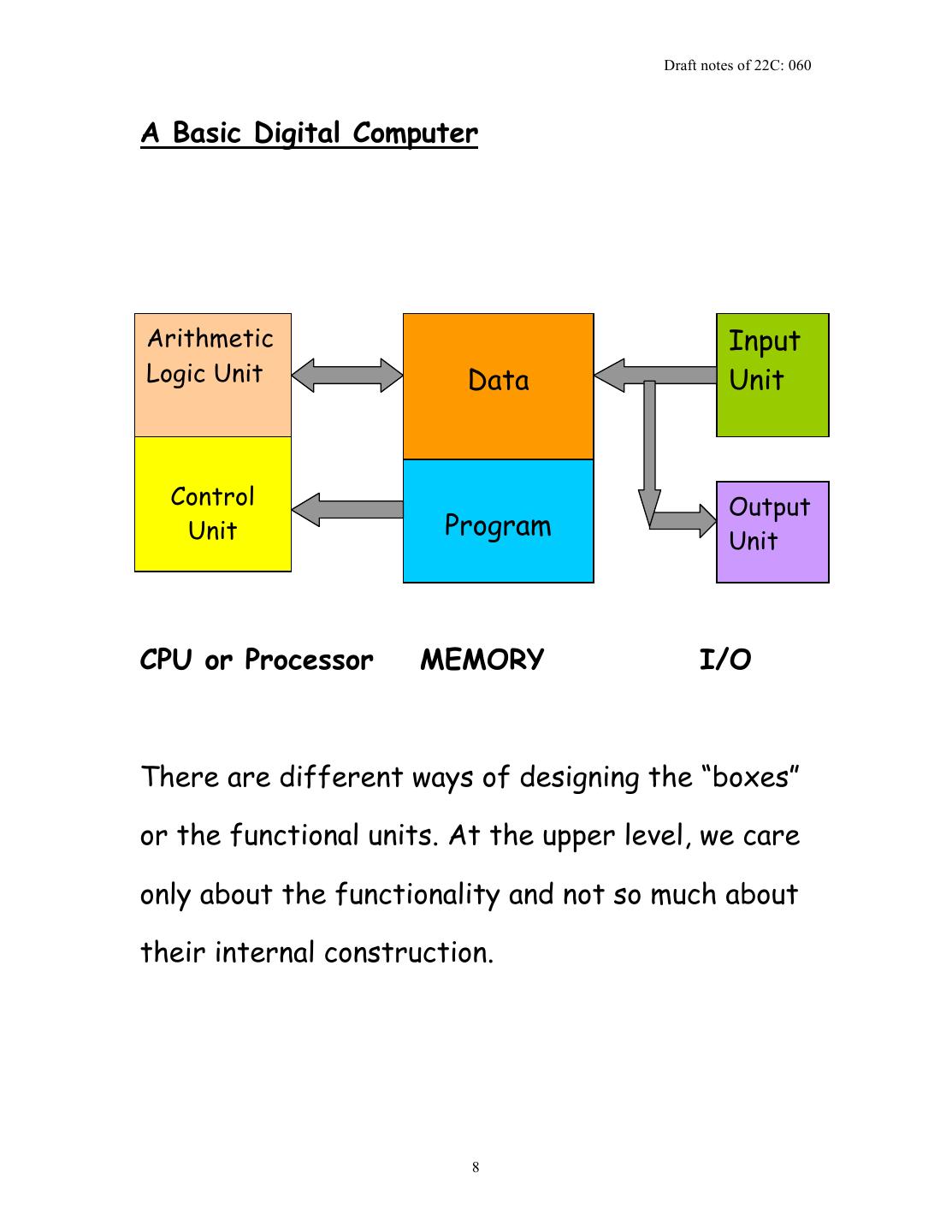- 快召唤伙伴们来围观吧
- 微博 QQ QQ空间 贴吧
- 文档嵌入链接
- 复制
- 微信扫一扫分享
- 已成功复制到剪贴板
01计算机组成
展开查看详情
1 . Draft notes of 22C: 060 Computer Organization 1
2 . Draft notes of 22C: 060 Introduction Here are some natural questions: How does a computer execute a program? What is there inside a computer? Are all computer hardwares alike? What is the difference between a PC and a Mac? 2
3 . Draft notes of 22C: 060 Technologies A computer is an instruction-execution engine. Different hardware technologies are possible: • Mechanical • Pneumatic • Electronic • Quantum • Biological We will focus on electronic technology only, which is the most common technology used today. It primarily uses silicon-based integrated circuits. 3
4 . Draft notes of 22C: 060 Classification General purpose Your PC Special purpose The computers in your car The computer in your cell phone The computer inside your camera The computer in your washing machine 4
5 . Draft notes of 22C: 060 Partial History of modern day computers Eckert and Mauchley Moore School of the U. of Pennsylvania, ENIAC John Von Neumann Princeton U. EDVAC, the blueprint of the first stored program digital computer Maurice Wilkes Cambridge U., EDSAC, the first operational stored- program digital computer John Vincent Atanasoff Iowa State University Designed a machine in 1939-1940 to solve differential equations. Recognition came much later. 5
6 . Draft notes of 22C: 060 Generations First generation: vacuum tubes Second generation: transistors Third generation: integrated circuits Fourth generation: LSI and VLSI Units of time 1 second -3 1 millisecond (ms) = 10 second -6 1 microsecond (µs) = 10 second -9 1 nanosecond (ns) = 10 second -12 1 picosecond (ps) = 10 second 6
7 . Draft notes of 22C: 060 Questions My PC has a 3 GHz clock. What does the clock do? How much time does it take to add two integers? How much time does your computer take to read a 1 MB (megabyte) file from a disk? What distance does an electronic signal travel in 1 nanosecond? 7
8 . Draft notes of 22C: 060 A Basic Digital Computer Arithmetic Input Logic Unit Data Unit Control Output Unit Program Unit CPU or Processor MEMORY I/O There are different ways of designing the “boxes” or the functional units. At the upper level, we care only about the functionality and not so much about their internal construction. 8
9 . Draft notes of 22C: 060 Measuring the Speed MIPS = Million Instructions Per Second MFLOPS = Million FLOating point ops Per Sec GFLOPS = Billion (Giga) FLOating point ops Per Sec TERAFLOPS = Trillion FLOating point ops Per Sec PETAFLOPS = 1015 FLOating point ops Per Sec What do we do with a TERAFLOP or a PETAFLOP machine? Do we have enough work for them (other than playing video games)? 9
10 . Draft notes of 22C: 060 Laws of Hardware • Signals cannot travel faster than the speed of light. • Memory is always slower than the CPU. • Software is slower than hardware. Moore’s Law. The packaging density of transistors on an integrated circuit increases 2x every 18 months. Gates Law. The speed of software halves every 18 months (Microsoft is the worst offender. Software bloat almost compensates for hardware improvement due to Moore’s law). Amdahl’s law Concerned with the speedup achievable from an improvement to a computation that affects a fraction of that computation. 10
11 . Draft notes of 22C: 060 Factors influencing computer performance Compiler Problem algorithm HLL machine P program code How fast can you solve a problem on a machine? Depends on • The algorithm used • The HLL program code • The efficiency of the compiler And, of course, it also depends on the target machine. If the algorithm is lousy, then do not blame the computer! 11
















